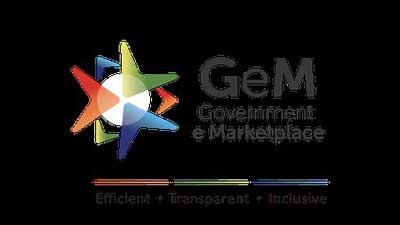Relevance: GS-2: Important aspects of governance, transparency and accountability, e-governance.
Key Phrases: Government e-Market (GeM), Procurement, Co-operatives, Special Purpose Vehicle (SPV), Ministry of Cooperation, GeM SPV, Co-operatives in India.
Why in News?
- The Union Cabinet has given its approval for expanding the mandate of the government’s online public procurement platform, Government e-Market (GeM), by allowing procurement by co-operatives.
No. of beneficiaries:

- More than 8.54 lakh registered co-operatives and their 27 crore members would benefit from this initiative.
Government e-Market (GeM)
- The Government e-Marketplace (GeM) was launched on August 9, 2016, by the Ministry of Commerce and Industry, Government of India to create an open and transparent procurement platform for Government buyers.
- A Special Purpose Vehicle (SPV) by the name of Government e-Marketplace (GeM SPV) was set up as the National Public Procurement Portal.
- At present, the platform is open for procurement by all government buyers: central and state ministries, departments, public sector enterprises, autonomous institutions, local bodies, etc.
- As per the existing mandate, GeM is not available for use by private sector buyers.
- Suppliers (sellers) can be from across all segments: the government or private.
Benefits:
- Access to the well-developed one-stop portal: GeM is already
adequately developed as a one-stop portal to facilitate online
procurement of common-use Goods and Services.
- It is transparent, efficient, has an economy of scale, and is speedy in procurement.
- Improved average savings for buyers:
- It would help co-operatives in getting competitive prices through an open and transparent process.
- According to the World Bank, the average savings for buyers in the GeM portal is about 9.75 percent on the median price.
- Cost comparison of various commodities on GeM with those of popular online platforms such as Amazon and Flipkart showed that GeM prices were 9.5 percent lower (Economic Survey 2021-22)
- Timely Payment: To protect the interests of the broader seller community on GeM and ensure timely payments, the modalities of payment systems shall be decided by GeM in consultation with the Ministry of Cooperation.
- Ease of Doing Business: This is also expected to enhance the overall “Ease of Doing Business" for cooperatives while providing a larger Buyer base to the GeM registered sellers also.
- Save Time: Following the standard procedures on GeM would lead to a saving of time and a reduction in the administrative burden.

- Improved credibility: It would enhance the credibility of the cooperatives as complaints of mismanagement of funds will get reduced.
What is a cooperative?
- It is an autonomous association of persons united voluntarily to meet their common economic, social, and cultural needs and aspirations through a jointly-owned and democratically-controlled enterprise.
Onboarding of Co-Operatives:
- The Ministry of Cooperation, in consultation with the GeM SPV, will prepare the validated list of cooperatives to be onboarded on GeM for the pilot as well as subsequent scale-up.
- This will ensure that technical capacity and logistics requirements of the GeM system are taken into account while deciding the pace of onboarding of co-operative as buyers on GeM.
- GeM will
- provide a dedicated onboarding process for cooperatives,
- provide the technical infrastructure to support additional users on the existing portal,
- assist co-operatives with onboarding and transaction journeys, via available contact centers, in-field training, and other support services.
Co-operatives in India:
- During the pre-independence era,
- The term cooperative Societies came into existence when the farmers of Poona and Ahmednagar spearheaded an agitation against the money lenders who were charging exorbitant rates of interest.
- Hence, the British government came forward and passed three acts- the Deccan Agriculture Relief Act (1879), the Land Improvement Loan Act (1883), and the Agriculturists Loan Act (1884).
- But the Cooperative move came with structure and shape when the British enactment of the Cooperative Credit Societies Act, 1904.
- After independence
- Cooperatives became an integral part of Five-Year Plans.
- In 1958, the National Development Council (NDC) had recommended a National Policy on Cooperatives and also for training of personnel and setting up of Co-operative Marketing Societies.
- In 1984, the Parliament of India enacted the Multi-State Cooperative Societies Act to remove the plethora of different laws governing the same types of societies.
- The most important success story lies behind the success of the White Revolution which made the country the world’s largest producer of milk and milk products.
Expenditure involved:
- GeM SPV may need some investments in additional technology infrastructure, and additional training and support resources.
- To cover these incremental costs, GeM may charge an appropriate transaction fee from cooperatives, to be decided in mutual consultation with the Ministry of Cooperation.
- Such charges shall not be more than the charges which GeM would charge to other Government buyers.
- This will be planned to ensure self-sustainability of operations for GeM, and hence no major financial implication is expected for the government.
Conclusion:
- The cooperative movement in India has grown significantly, playing an important role in addressing the developmental needs of underprivileged classes in India, especially in the agricultural, banking, and housing sectors.
- It is felt that the rich experience gained in creating the procurement ecosystem in the country can be significantly utilized to produce efficiencies and transparency in procurement processes for cooperatives also.
Source: The Hindu BL, PIB
Mains Question:
Q. What is Government e-Market (GeM)? What are the benefits of onboarding co-operatives on the GeM portal?








